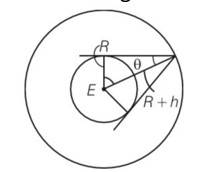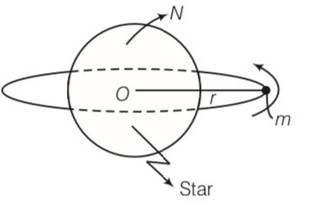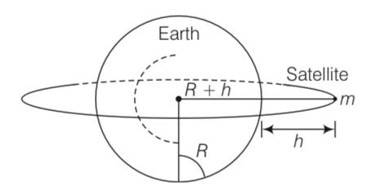Physics NCERT Exemplar Solutions Class 11th Chapter Eight
Get insights from 134 questions on Physics NCERT Exemplar Solutions Class 11th Chapter Eight, answered by students, alumni, and experts. You may also ask and answer any question you like about Physics NCERT Exemplar Solutions Class 11th Chapter Eight
Follow Ask QuestionQuestions
Discussions
Active Users
Followers
New answer posted
5 months agoContributor-Level 10
This is a Long Type Questions as classified in NCERT Exemplar
Explanation-let m be the mass of the earth vp, va be the velocity of the earth at perigee and apogee respectively. Similarly wp and wa are angular velocities.

At perigee, at apogee
If a is the semimajor axis of the earth's orbit then rp=a (1-e) and ra=a (1+e)
= 0.00167
Let w be the angular speed which is geometric mean of wp and wa and corresponding to mean solar day.
=1.0691
If w corresponds to 10 per day then wp = 1.0340 per day and wa= 0.9670 per day . since 3610=24, mean solar day we get 361.0340 which corresponds to 24h,8.14' and 360.9670 corresponds to 23h59min52'. So
New answer posted
5 months agoContributor-Level 10
Explanation- mass of earth M = 6
Radius of the earth , R = 6400km= 6.4
T=24h= 24
G = 6.67 10-11Nm2/kg2
(a) Time period T =
= 2
= ( )1/3
( )1/3-R
So after solving we get h = 3.59
(b) If satellite is at height h from the earth's surface

Cos = = cos81018'
= 81018'
=2(81018')= 162036'
If n number of satellite needed to cover entire the earth then
So n = 3600/2 = 2.31
So minimum 3 satellite are required to cover entire earth.
New answer posted
5 months agoContributor-Level 10
This is a Long Type Questions as classified in NCERT Exemplar
Explanation- consider a diagram having vertices A,B,C,D,E and F

AC= AG+GC=2AG
= 2lcos300= 2l
=
AD=AH+HJ+JD= lsin300+l+lsin300=2l
Force on mass m at A due to mass m at B is f1= along AB
Force on mass m at A due to mass m at C is f2= along AC
Force on mass m at A due to mass m at D is F3= along AD
Force on mass m at A due to mass m at E is F4= = along AE
Force on mass m at A due to mass m at F is F5= along AF
Resultant force due to F1 and F5 is F1=
= along AD
So net force along AD = F1+F2+F3=
New answer posted
5 months agoContributor-Level 10
This is a Long Type Questions as classified in NCERT Exemplar
Explanation- when a body og mass m is revolving around a star of mass M.

Linear velocity of the body v= so when r increases then v decreases.
Angular velocity of the body w = 2
According to kepler's law T2 r3
So T= kr3/2
So w= so when r increases, w decreases.
Kinetic energy of the body K= 1/2mv2=1/2m ( ) so when we increase r, KE decreases.
Gravitational potential energy of the body
U=-GMm/r
So when we increase r, PE becomes less negative
Total energy of the body E= KE+PE=
When r increases total energy becomes less negative . i.e increases.
Angular mom
Taking an Exam? Selecting a College?
Get authentic answers from experts, students and alumni that you won't find anywhere else
Sign Up on ShikshaOn Shiksha, get access to
- 65k Colleges
- 1.2k Exams
- 679k Reviews
- 1800k Answers

